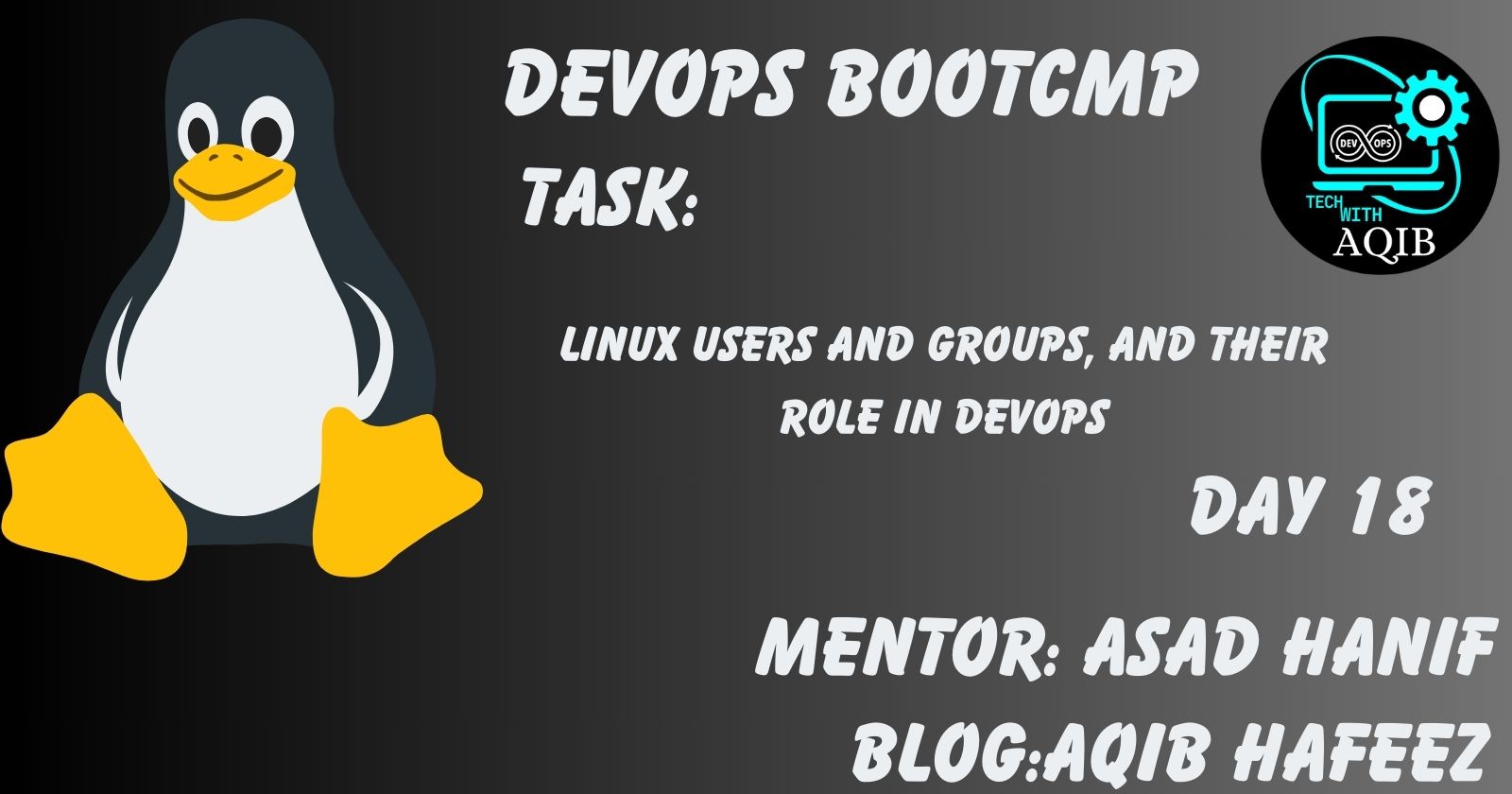Day 18 || Linux Users and Groups, and Their Role in DevOps
 AQIB HAFEEZ
AQIB HAFEEZ
In this article, we'll explore what users and groups are in Linux, the different types of users and groups, and why they are important in the DevOps context.
Linux Users:
Linux allows multiple users to log in and interact with the system simultaneously. Each user is assigned a unique username and user ID (UID). Here are some key types of users in Linux:
Superuser (root):
The superuser, often referred to as "root," is the most powerful user on a Linux system. Root has unrestricted access to all system resources and commands, making it the ultimate administrator. Root is responsible for system maintenance, configuration, and critical tasks.
Regular Users
: Regular users are standard accounts created for individual users. They have limited privileges and can typically access only their own files and directories. Regular users are essential for day-to-day activities and applications.
System Users
System users are dedicated accounts used for running system processes and services. They do not have login access and are designed to execute background tasks without exposing the system to potential security risks.
Linux Groups:
Linux groups are collections of users that facilitate the management of permissions and access control. Here are some types of groups in Linux:
Primary Group:
Each user in Linux belongs to a primary group. When a user creates files or directories, they are assigned the primary group as the default group ownership. This simplifies file sharing and access control within a user's primary group.
Secondary Groups:
Users can also be part of multiple secondary groups. Secondary groups allow users to collaborate with others on specific projects or tasks. By adding users to relevant secondary groups, you can control who has access to particular resources and directories.
DevOps and User/Group Management:
In the DevOps world, efficient user and group management is essential for collaboration and automation. DevOps teams often create dedicated user accounts and groups to streamline workflows, enforce security policies, and manage access to development, testing, and production environments.
DevOps groups can serve various purposes, such as:
Development Teams: DevOps groups can be created to manage access to source code repositories, ensuring that only authorized team members can commit code.
Deployment and Operations: Groups can be established for deployment and operations teams to handle configuration management and infrastructure provisioning tasks.
Access Control: DevOps groups allow you to implement the principle of least privilege, ensuring that users have only the permissions necessary to perform their tasks.
Subscribe to my newsletter
Read articles from AQIB HAFEEZ directly inside your inbox. Subscribe to the newsletter, and don't miss out.
Written by

AQIB HAFEEZ
AQIB HAFEEZ
DevOps Engineer, Linux, Git, GitHub, GitLab, CI/CD pipelines, Jenkins, Docker, Kubernetes, Ansible & AWS. Practical experience in these DevOps tools enhances my passion for streamlined workflows, automated processes, and holistic development solutions. Proficient in digital and Facebook marketing, aiming to merge technical acumen with marketing finesse.